Lalibela
- hm
- May 25
- 6 min read

For years, Ethiopia called to me with its ancient allure, but nothing stirred my curiosity more than the rock-hewn churches of Lalibela — a UNESCO World Heritage site and a marvel carved out of a monolithic stone.
Perched in the Lasta Mountains of northern Ethiopia, this highland town offers breathtaking views and the portal to visit the ancient churches carved directly into the rugged terrain.
Flying out of Addis Ababa with Ethiopian Airlines, I landed at Lalibela’s quiet airport in under an hour. The quick flight delivered me from city bustle to highland serenity.

Stepping off the plane in Lalibela, I found the airport parking lot with many tourist vans ready to take travelers into town.
For just 300 birr, about $2, I joined a shared ride that wound through the highland roads, reaching the village of Lalibela in about 40 minutes. The journey was scenic — a gentle descent into history, framed by rugged peaks.
As we rolled toward Lalibela, the van dipped and climbed through winding highland roads. I saw steep mountain slopes dotted with tiny homes, their tin roofs catching the sun. The day was brilliantly clear, and visibility stretched for miles.

The van eased into Lalibela’s main square — a rustic hub framed by a handful of buildings. Tuk tuks buzzed around, donkeys trotted past, and stray dogs lazed in dusty corners. With every gust of wind, the dust filled one's nostrils.

Tucked just off Lalibela’s dusty square, I spotted the modest sign for Hotel Blue Nile and wandered in. The manager welcomed me and offered a decent room for $50 USD a night, his smile steady but firm. A quick glance at my phone revealed a surprise — the same listing for $8 on Booking.com. I held up the screen with a grin, and he chuckled before graciously offering room and breakfast for $8.

Just a half-mile stroll from Hotel Blue Nile led me to the entrance of the Lalibela church complex. Expecting the $50 fee I’d seen online, I was caught off guard when the ticket counter quoted $100 USD. With practiced formality, they handed me an official document and explained the price had doubled a year ago.
Adding to the adventure: the ticket counter didn’t accept credit cards, and payment was required in Ethiopian birr. I wandered the village square, trying seven different ATMs — each showing an error message. Just as frustration began to creep in, Hotel Blue Nile saved the day: they swiped my credit card for $100 USD and handed over the birr, no questions asked, no extra fees added. A moment of unexpected grace in the highlands.

I had set out to explore Lalibela’s ancient churches on my own, but a local guide soon began shadowing my steps. With a warm smile and polished pitch, he offered to show me all eleven churches over two half-day visits for $30. I countered with $10 — he chuckled, nodded, and we were off. As we wandered through stone corridors, he shared that tourist numbers were thin, a lingering shadow from the civil unrest still simmering in Amhara and Tigray.

At the entrance to the complex was the first grand church, Biete Medhane Alem—the House of the Saviour of the World. Carved entirely from a single slab of volcanic rock, it’s hailed as the largest monolithic rock-hewn church on Earth.

Its basilica-style layout includes five naves and 34 pillars forming a colonnade. Built in the 13th century under Emperor Lalibela and inspired by Aksum’s Saint Mary of Zion, it also guards the treasured Lalibela Cross, making it architecturally and spiritually significant.

Stepping inside Biete Medhane Alem, I could see the space stretched tall and wide, with soaring arches that echoed silence.

Windows adorned with intricate carvings filtered shafts of light, each one etched with unique designs.

In several of them, I spotted the familiar outline of the Ethiopian-Eritrean processional cross — ornate and symbolic, its presence quietly declaring centuries of faith and craftsmanship.

Wandering through the churches, my guide spoke of the Nine Saints — monks who arrived in Ethiopia around 480 AD, escaping persecution in the Roman Empire after the Council of Chalcedon.
They helped revive Christianity across the highlands, founding monasteries, carving churches into rock, and translating the Bible into Ge’ez, the sacred language still used in liturgical chant.

High above, the ceiling blossomed into a circular ornately carved ornament, with delicate detail. Time had dimmed its brilliance. Even worn, it held the quiet grace of something sacred, with craftsmanship that stood the test of time.

At the entrance, an iron door stood sentinel — its surface darkened by time, textured with rust and dents. The patterns traced old crosses, and the hinges creaked as it opened.

Towering above Bete Maryam, a wide canopy stretched across steel beams like a protective wing. These shelters were placed to guard against rainwater — the relentless force that erodes intricate carvings and softens age-old walls.
Though their appearance contrasted with the ancient charm below, they provided the quiet service of preservation.
The pillars stood firm and broad, their surfaces adorned with fading yet evocative religious paintings — saints, angels, and scriptural scenes rendered in the distinctive style of Ethiopian Orthodox art.
Rounded and slightly pointed arches bridged each massive column, carrying the weight of the vaulted ceilings above.
Looking up inside the church, the ceiling unfolded like a tapestry of elaborate pattern of interwoven crosses and circles, each filled with delicate motifs.
Painted in earthy reds, browns, and off-whites against a shadowed backdrop, the design echoed centuries of devotion and workmanship that lasted the test of time.

In the dim sanctum of the church, priests sat quietly on thick carpets, surrounded by paintings of saints, Christ, and Mary. Their presence felt timeless, as if woven into the very stone — until they stirred on hearing the soft echo of visitors' footsteps.
They perked up gently, greeted visitors with a nod or a whispered blessing. I imagined the carpets were a later addition, laid to soften the bare rock floor that must have been unforgiving to both pilgrims and priests alike.

A striking painting of Saint George slaying the dragon captures the eye and this image is seen in most of the churches.
The saint, poised on horseback, drives his spear into the beast — a vivid symbol of good triumphing over evil. Revered across Ethiopia, Saint George embodies courage and divine protection.
The slender wooden staffs leaning beside priests and tucked into corners — prayer sticks, known locally as mekwamiya are spiritual tools. Used during long liturgies, they help devotees stand or lean in reverence, especially during midnight prayers and holy festivals.
Some are carved with sheep-horn shapes or crosses, symbolizing humility and divine support.
Just outside the stone walls of the church, a priest sat beneath the tree in the shade, guiding a group of curious children through the strokes of tradition. Spread before them was a stretched cowhide, its surface slowly coming to life with vibrant scenes — saints, ancient tales, and spiritual legends painted in bold, earthy hues.
Each painting depicted centuries of storytelling, and the children leaned in, their heritage passed to them by their elder.

Just a few steps away was the church that had lived in my imagination long before I arrived — St. George’s Church, the iconic cross-shaped marvel.
For years, every image I saw of Lalibela show this one structure, yet I had never truly known what it looked like beyond the aerial view — that perfect cross etched into stone.
Awestruck, I stepped gingerly down the slope, each footfall revealing more of St. George’s Church — a masterpiece slowly unveiled like a secret.
Carved top-down from the mountain itself, the church emerged not by construction, but by subtraction.
Using ancient tools, artisans from as early as the 4th century chiseled away the excess stone until only the sacred form remained — a perfect cross rising from the earth, not built upon it. It felt less like entering a building and more like descending into a revelation.
Inside, the church echoed the spiritual artistry of its sibling churches — walls adorned with paintings of saints, Jesus, and Mary, their colors softened by time. The sanctum rose tall and solemn, its ceiling etched with a large cross, carved directly into the rock.

Just outside the St. George’s Church, a small pond shimmered quietly — a divine marvel nestled in stone, its presence almost surreal in the dry highland air.
From this sacred pool, slender blades of grass grew, and during prayer ceremonies, priests would gently pluck them and offer them to devotees as blessings.

After hours spent wandering through Lalibela’s sacred stone — tracing arches, admiring paintings, and soaking in centuries of devotion — dusk began to settle over the highlands.
A group spirited youths surrounded me with hopeful grins. Their request was simple and earnest — a new football to replace the one they'd been kicking around, now barely holding together.
They led me to a small shop, and when the new ball was finally in their hands, their faces lit up with pure joy.
A milelong walk away, I found a quiet restaurant perched on a hillside, its terrace opening to sweeping mountain views.
The sunset painted the clouds in hues of gold, rose, and violet. As I watched the light fade, I felt a deep contentment.
I was the only customer at the restaurant, and soon the couple from Porto, the ones I’d spotted on the flight to Lalibela joined me, and over dinner we shared stories, laughter, and reflections on the day’s wonders.
The conversation flowed easily, stretching into the evening. When it was time to leave, we hopped into a shared tuk tuk, winding back through the village streets to our hotel — a perfect end to a day steeped in history, beauty, and unexpected connection.












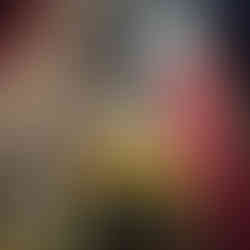










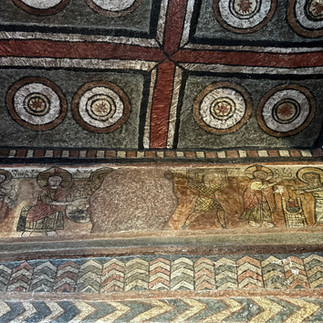



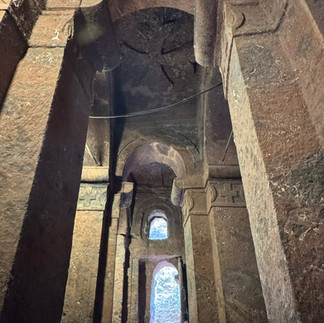








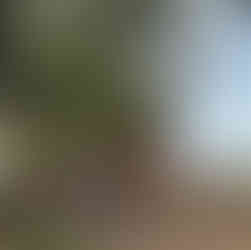



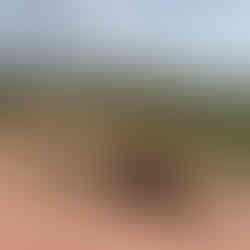



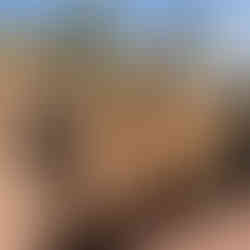



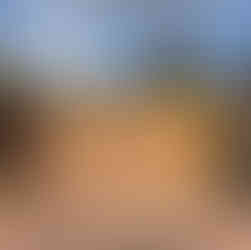








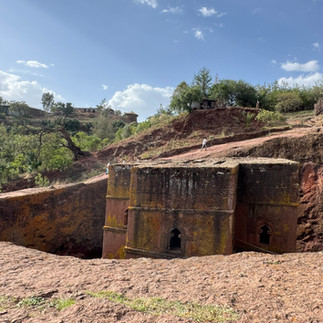









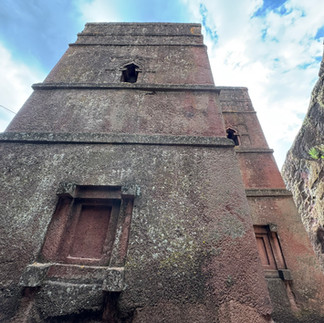











Comments